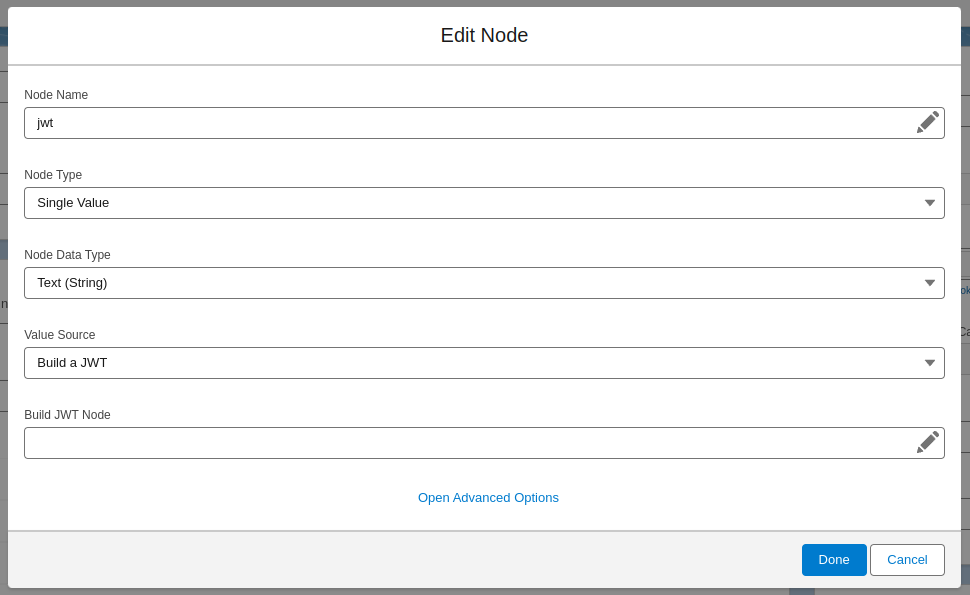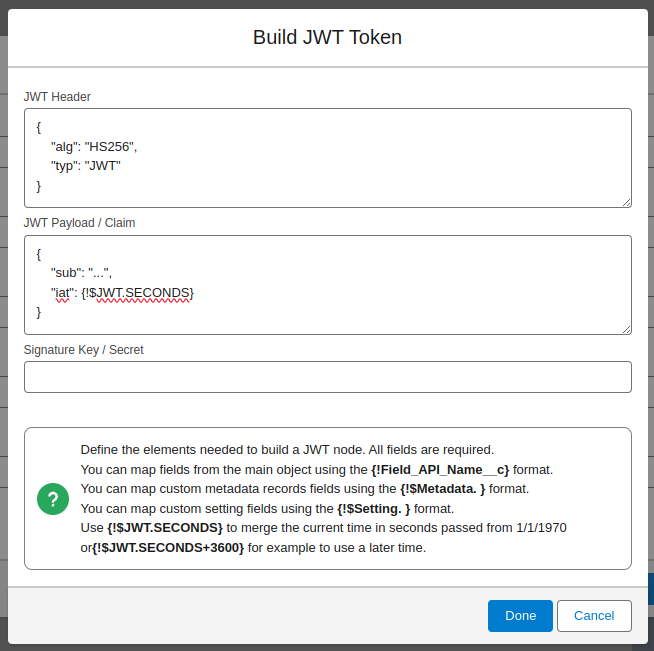Build a JWT Token Node for outbound calls
Build a JWT Token Node for outbound calls
In outbound calls, some APIs require a JWT token to be sent in one of the nodes. To facilitate this, we’ve added support for building a JWT node. Simply select Build a JWT from the Value Source input, then click on the Build JWT Node option to set the details of the JWT node.
This will open a popup where you can enter the details for the JWT node. Check the documentation of the API you are building for the required structure of the JWT node.
You can also map fields, custom metadata or custom settings in the inputs.
For fields, use this the {!Field_API_Name__c} format. For example, {!BillingCountry}.
If you need to include a Custom Label in the text, you can merge it using this format: {!$Label.Label_Name}.
For example: {!$Label.Custom_Label}
If you need to include a Custom Metadata field in the text, you can merge it using this format: {!$CustomMetadata.CustomMetadataTypeAPIName.RecordAPIName.FieldAPIName}.
For example: {!$CustomMetadata.Metadata__mdt.Record1.Field1__c}
If you need to include a field from a List Custom Setting, you can merge it using this format: {!$CustomSetting.CustomSettingAPIName.RecordName.FieldAPIName}.
For example: {!$CustomSetting.List_CS__c.Record1.Field1__c}
If you need to include a field from a Hierarchy Custom Setting, you can merge it using this format: {!$CustomSetting.CustomSettingAPIName.FieldAPIName}. You don’t need to specify the record name because it will use the record best matching the running user.
For example: {!$CustomSetting.Hierarchy_CS__c.Field1__c}
Use {!$JWT.SECONDS} to merge the current time in seconds passed from 1/1/1970. You can use {!$JWT.SECONDS+3600} to use a later time (in this example, one hour in the future).



